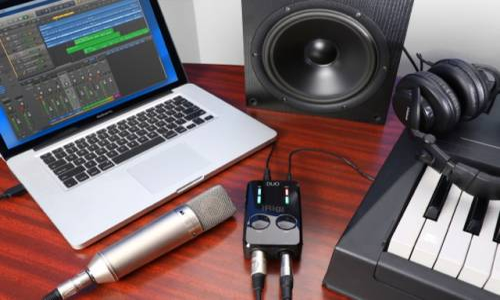
Do you want to mix your music and are looking for advice? Here you will find the most important basics of this process. Yes, it takes a lot of time. But as a result, a good mix can take even a rather mediocre musical composition to a new level.
The first step involves adjusting the volume, also called leveling. The volume determines whether the signal is more in the foreground or in the background. Beginners often make the mistake of neglecting the volume controls, turning all the channels as high as possible. This leads to the so-called "sound mess" and makes listening extremely uncomfortable, as the instruments and melodies are no longer clearly distinguishable. Remember that important elements, such as vocals or the main melody, should be in the foreground (that is, louder). Instruments providing rhythm should not be too quiet. It is also desirable to mix flat instruments (strings, pads) more quieter.
Audio dynamics involves using a compressor to add punch to weak audio signals. However, remember that depending on the musical genre, this is sometimes more or less desirable. In music, mood and atmosphere are created by alternating quiet and loud passages. Electronic music, on the other hand, makes relatively extensive use of audio compression. As a result, he seems more powerful and has a stronger presence.
Panning determines which instrument will be heard to the left or right of the listener. It is best to place the main instruments in the middle, and the auxiliary ones to the left or right of the sound spectrum. If you give each of your instruments a position, the sound image seems "wider". If you place all the instruments in the middle, the sound will be blurry and thin.
Frequencies play an essential role in mixing music. Each instrument must have its specific place in the frequency spectrum. Like melodies, frequencies should harmonize with each other. So how do you create a balanced frequency spectrum? First, you should consider which instrument covers the lowest frequency range. Usually, these are drums and bass melodies. The mids are dominated by main instruments and vocals, while the highs are dominated by strings and hit hats.
Using effects is the penultimate point when it comes to mixing music. There are two main rules that you must follow. Don't get carried away with the effects. This will make your mix overloaded, and instead of a melody, you will end up with a mess of sounds.
Mono compatibility is often underestimated, and this is a very important factor. The sound should not only sound good on a great system, but also create enough pressure on smartphones, tablets, or weaker playback devices. If you rely only on stereo sound, some instruments or effects may be too quiet or barely audible. Also, a mix that is too wide can be too weak in the middle. So also work with mono effects and regularly test your mix on other playback devices.
It so happens that frequencies and effects can overlap in a later mix. This can lead to background noise, and songs on weaker systems tend to sound washed out or result in overdubs. Therefore, it is recommended to filter out individual background noises such as hum or whistle with a narrow band equalizer.
